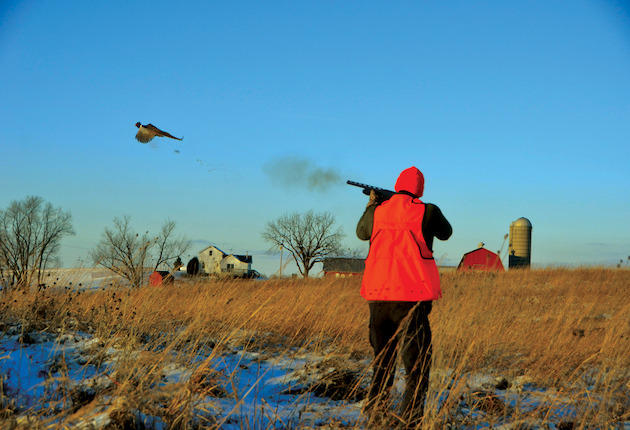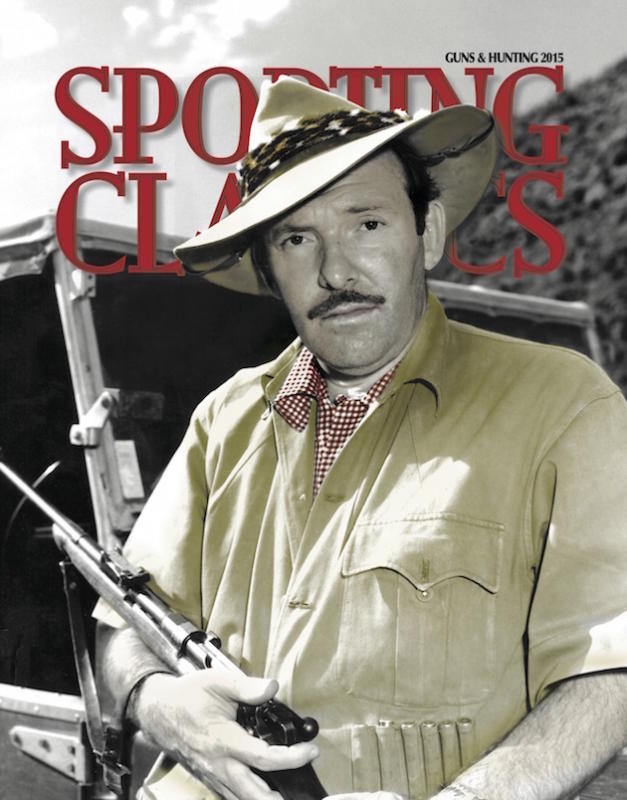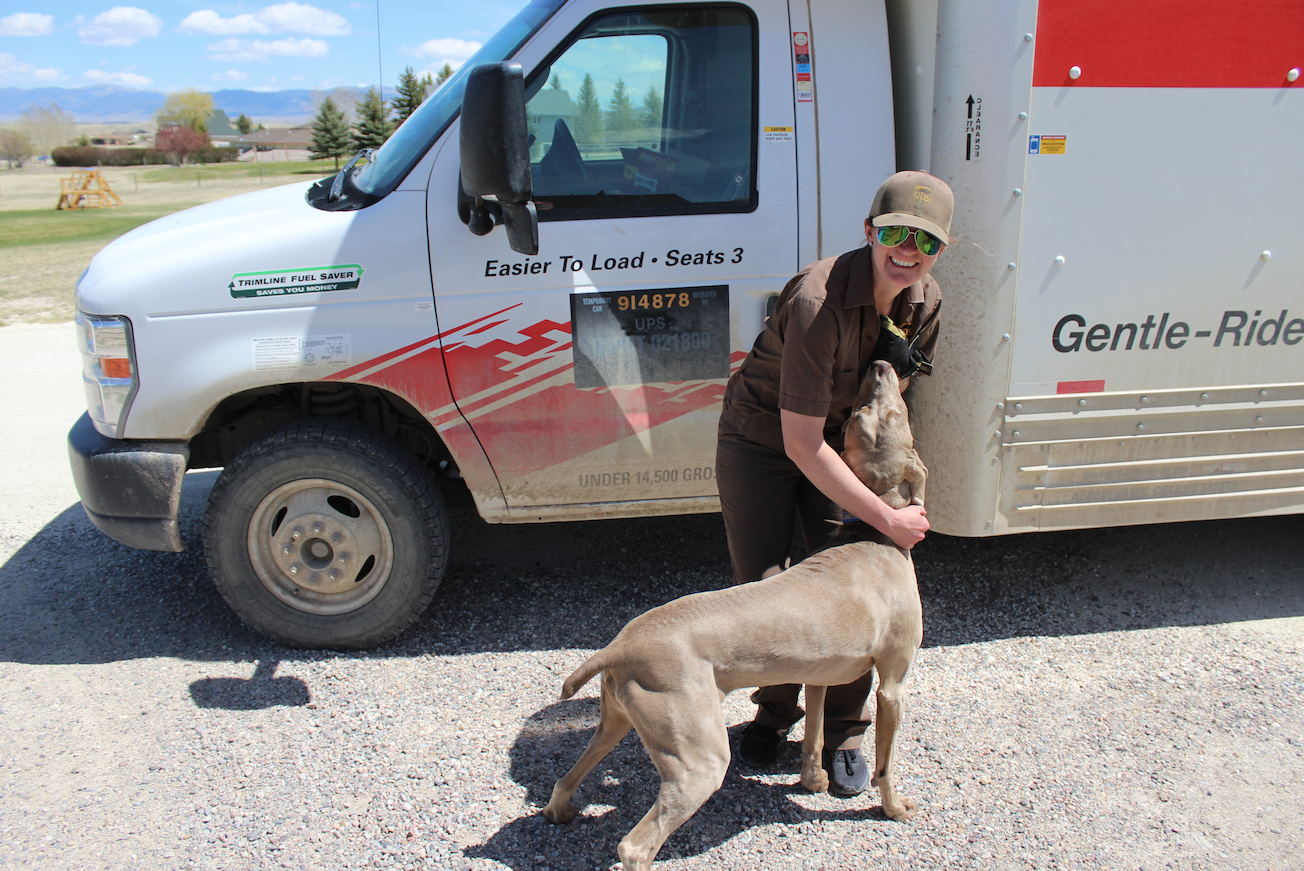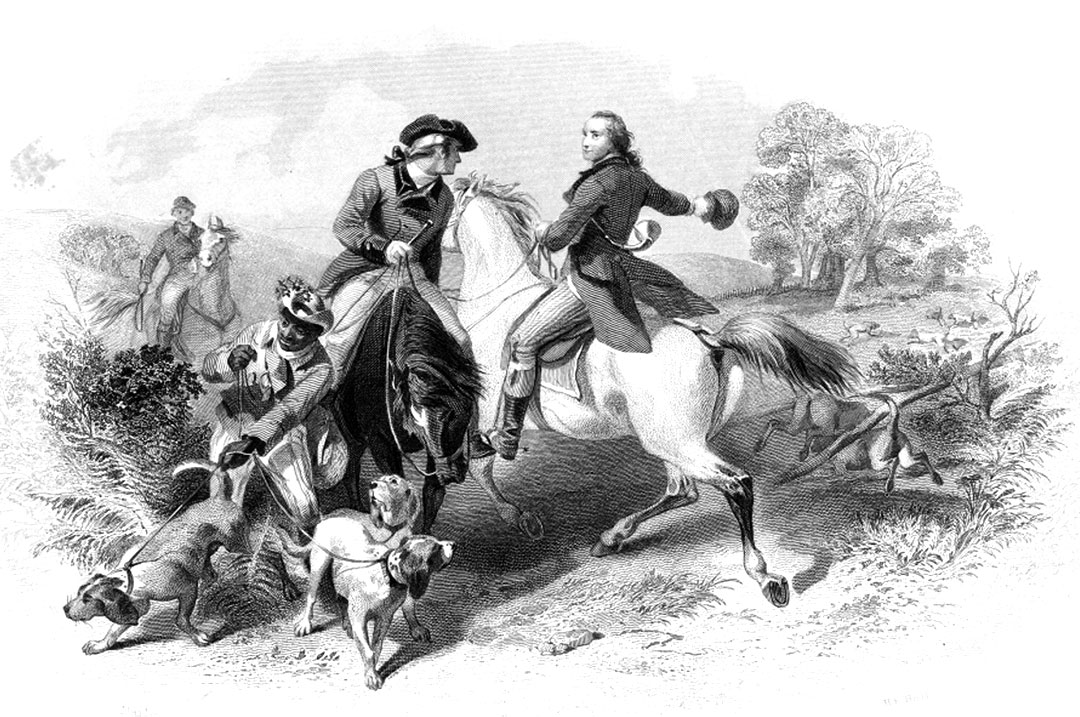Nestled in the bluffs just a few miles east of the Mississippi River, on the edge of the Midwest’s pheasant belt, are 355 acres of upland bird heaven. Rolling slopes covered in lush grass — big and little bluestem, switchgrass and Indiangrass, clover and brassica — all edged with evergreens and hardwoods, provide ideal roosting, nesting, and feeding cover for wildlife. Here, pheasants, Hungarian partridge, and bobwhite quail live the life of Riley, except for the occasional hawk, coyote, or shotgun-toting human.
Hilltop Meadows Hunt Club is just three hours west of Chicago, near the little bump in the road called Fulton, Illinois. The only thing Fulton has in common with Chicago, at least when we were there, was the wind.
My son Sam and I drove the 900 miles from South Carolina to enjoy a few days of upland bird hunting, bowhunting for whitetails, and some rare days together. He’s 29 and I’m, well, a lot older than that. I was happy that my best hunting buddy from 20 years ago would still agree to join me.
As we traveled through small towns and past huge farm fields, we talked about everything under the sun, from women to cars to work to the latest Netflix programs. But mostly we talked hunting — about past memories and memories to come.
When we arrived at the lodge Saturday afternoon, Mike Jacobsen was outside tending to one of a thousand things that always seem to need attention on a working farm.
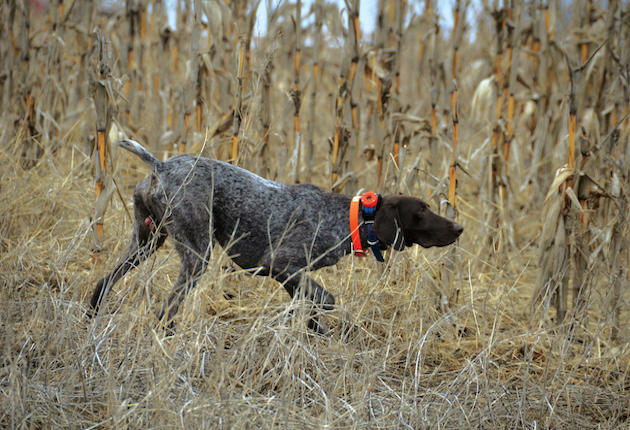

Mike Jacobsen has trained and worked several different gun dog breeds at Hilltop Meadows, including his German shorthair, Fred, and his stylish English pointer, Nellie.
Mike was younger and bigger than I’d pictured from our phone conversations. Not big as in chubby, but big as in tall and solid, with dust and farm-grade diesel running through his veins. And polite — the sort of gentle manner you’d expect from someone living in such a picturesque setting.
It was chilly on that mid-November day, around 30 degrees, without the wind. And according to the forecast, the mercury was going drop like a stone. By the time Sam and I left western Illinois the following Friday, the area had experienced record-breaking cold for mid-November. It was the fourth coldest November in Illinois history — 23 degrees below both the normal 47-degree high and 30-degree low.
We spent that first afternoon unloading gear — layer upon layer of insulated clothing and other necessities — and piling it into our room at the lodge. We also took time to sight in our bows with Mike’s 3-D deer target. Both were still dead-on after their long ride in the back seat of our vehicle.
The farm was gorgeous, the colors of the fields enriched by the low afternoon sun. Near the barn, horses milled about — the hobby and love of Mike’s wife, Gail, who part-times at a nearby veterinary clinic when she’s not cooking dinner for guests. Or taking pictures. She’s an excellent photographer and was happy to provide most of the pictures for our story.
The couple lives a few hundred yards from the old farmhouse that’s been transformed into a very homey hunting lodge. Yet during our visit, of all the many nice amenities — full kitchen, hot shower, and flat-screen TV — the old-fashioned woodstove in the living room was the most appreciated. The smoke coming up from the chimney as we headed back from hunting was always a welcome sight. Once inside, we spent many an hour huddled close around it, swapping stories, sipping bourbon or a beer, and thawing out.
Although the old homestead can sleep up to ten guests, Sam and I were the only hunters that week. That was fine with us. It gave us more time to spend with our hosts.
Mike spent most of his earlier years in and around Chicago and as the big city kept getting bigger, he finally decided it was time to “get the heck out of there.” He’d hunted on private lands around the property, and when it came up for sale, he grabbed the opportunity. The purchase included the house, which Mike says has been there forever.
“Even the old-timers around here say it’s always been here,” he smiles. “Nobody knows how old it is. We just remodeled it, added some updated appliances, but really didn’t try to change its character.”
One of the first things Mike did after gaining ownership of the land was to put it into the CRP program, which has enabled him to preserve the prairie grasses and other native plants for the birds. He’s also added food plots of corn, sorghum, and beans for the deer.
“We spend a lot of time trying to keep the non-native invasive species under control,” Mike explains. “We also burn our fields, which does them a lot of good.”
Asked if his birds are native, he replied: “I don’t know what a native or wild bird is anymore. You can go to South Dakota and ask the same question. They release birds there too. If they nest, are their offspring considered to be wild? We have birds that have been released and have flourished, while others were here when we started creating the hunting preserve.”
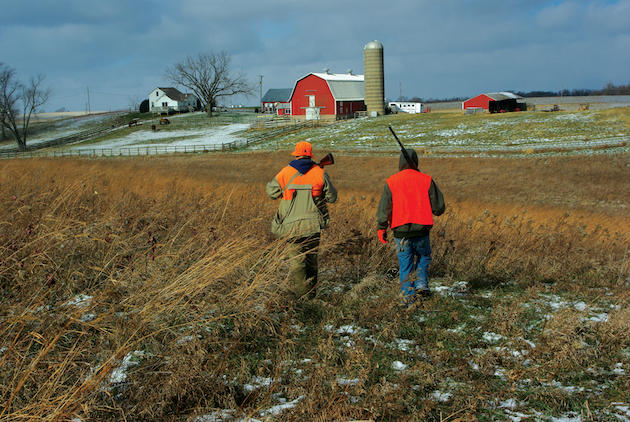
The author and his son walk across a Illinois field in a bitter November cold.
The birds we hunted at Hilltop Meadows seemed truly wild. Plentiful too. Plus, the grasses and shrubs in which they live make for a tough day’s walking. Add in the sub-zero temperatures driven by 40-mph winds, and you’ve got a lot of challenging shooting.
Thank goodness for Bob, Mike’s vizsla. He went non-stop, except when he was steady on point. One of the smallest of the gun dog breeds, the rusty red Hungarian pointer makes a loyal family dog and genuinely enjoys the company of people, visitors included.
Five a.m. Sunday morning arrived cold, dark, and too early. I heard Mike messing in the kitchen, smelled the coffee and saw the sliver of light under the bedroom door.
When we came into the kitchen, Mike had a map of his deer stands laid out on the dining table.
“Morning,” he said after a sip of coffee. “Forecast says there is more snow coming.”
Whether we would get the big storm coming down from North Dakota or just the edge of it was anybody’s guess. We’d had a dusting of snow that night and the white flakes were continuing to swirl outside the windows. Either way, it was going to remain cold for the foreseeable future.
After coffee and sweet rolls, Sam and I bundled up, donned our pac boots, grabbed our bows in the boot room, and piled into the Polaris with Mike. As we bounced through the darkness, he explained the strategy behind his selection of our morning stands. Plenty of tracks around both, and there was a favorable wind.
I was carrying my new Matthews Creed, while Sam was toting my older Matthews Feather Light, now a hand-me-down. We were also wearing Hunter Safety System vests, which fit snugly and didn’t get in the way like some older safety harnesses we’ve used.
My lock-on overlooked the corner of a food plot, a thick, shrubby edge, and a hardwood slope that spilled off to my right. The setting was beautiful with light snow falling, slowly adding to the sparse layer already on the ground. Sam had a similar set-up but close to a fresh scrape.
Sam watched a mature buck and two does come to the field that morning, but they remained just out of bow range.
My stand was active with deer most of the morning. Does of all sizes, a spike, a fork horn, and a young 8-pointer all ghosted through the timbered slope below me. The 8-pointer actually stopped broadside at 20 yards — perfect — but he needed a couple of years to grow some bragging horns.

Bill, a lanky, hard-running vizsla, retrieves a ringneck rooster. Big stands of prairie grass provide excellent cover for the birds.
Now don’t get me wrong. Sam and I aren’t the big-rack chasers like you see on the hunting channels. We hunt for the experience and the challenge of taking a mature buck. We’ve learned that the best stories often come from bucks that score only 120 Boone and Crockett points.
As a southern hunter who is not used to Midwest monsters, I could easily have gotten bug-eyed over such a pretty rack and slung an arrow his way. But we’d seen the photos of big deer at Hilltop Meadows and the heads on the walls, so we were holding out for bigger, older bucks. And with a doe tag each, we could certainly take that route to secure some venison.
For the next two days the deer went underground. They simply disappeared. It wasn’t the cold or the snow, or even the wind. It’s just something they do at a certain point during every rut. Like “henned-up” gobblers.
The only deer we did see during that period, other than a few yearlings, was a really, really nice buck. Unfortunately, he was already dead — the victim of coyotes. He’d been killed just a few hours before we caught a glimpse of an antler tine sticking up in the prairie grass. The back half of his body had been eaten, but his head, neck, and shoulders were unscathed.
“I’m getting him mounted and naming him Carolina,” Mike announced as we loaded the carcass into the Polaris.
We spent our deer-less middays chasing birds and trying to keep up with Bob. Tuesday afternoon in the fields was without a doubt the coldest bird hunt Sam and I had ever experienced. The low had dropped to 7 degrees Fahrenheit, and by noon the temperature struggled to reach the predicted high of 19. But when you figure in the high winds — we’re talking sub-zero — that will sting your cheeks.
Thank goodness for the plentitude of birds and Bob’s excellent nose. We found quail, Huns, and pheasants, all mixed in the dense cover, so we didn’t always know what would flush. Of course, pheasants were the real prize, and we walked out of the field that day with eight, along with several quail and partridge.
Late on a Wednesday afternoon, more than halfway through our visit, Mike drove us to our stands where the deer finally emerged from hiding. Small bucks and does were literally scampering through the meadows. The big boys, however, were too smart to get gleeful in the broad daylight. But evening was coming.
After dropping off Sam, Mike took me within a couple hundred yards of my treestand, a lock-on near a small creek in the middle of a bare field. I felt like the proverbial sore thumb sticking out in the only tree for 50 yards. But don’t ever try to out-guide the guide, I reminded myself. As I settled in, I drew back the bow to gauge the shooting situation from my new perch.
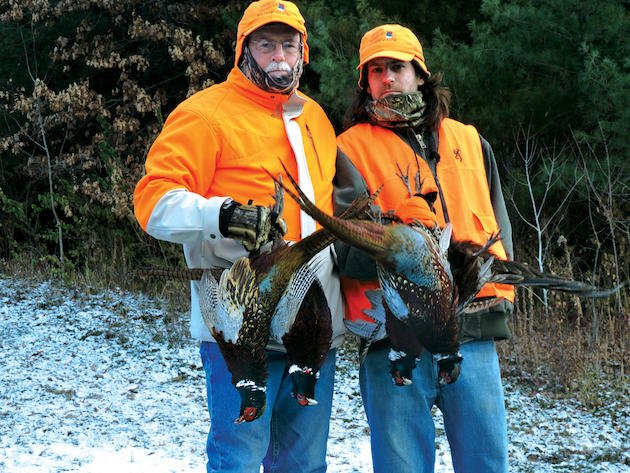
The author and his son, Sam, found plenty of pheasants — despite the icy temperatures.
“Oh crap,” I muttered under my breath. The peep-sight was missing. It must have been knocked off during one of the rough bumps in the Polaris. I had tried to cradle it during the rides, but I remembered it hitting the dashboard pretty hard. Nevertheless, had it been tied in properly it would still be there.
I pulled a piece of loose thread from a glove and attempted to rig a make-do marker on the string. But it was imperfect at best. If you’re not a bowhunter, then you can liken it to losing the front sight on an iron sight rifle. You’ve lost your point of reference.
As luck would have it, the buck I’d waited for appeared. Hanging with several does, the big 10-pointer first showed himself more than 100 yards away, but he continued to work toward me until he stood broadside at 25 yards.
The does were meandering past him, feeding on grass and mast. Their path would take them away from me, across the creek and up the far hillside. I had the bow up and ready but resigned myself to the fact that, unless he got really, really close, I had no shot without the peep.
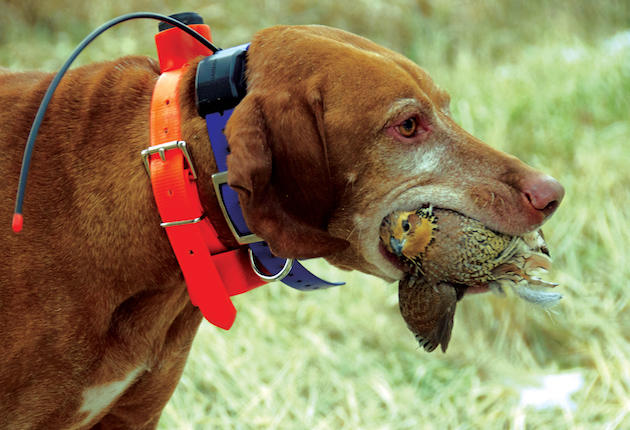
Bob softmouths a winged-quail. “Bob’s my star … a legend around here,” says proud owner Mike Jacobsen.
The guy in the archery shop who had set up my bow had failed to properly tie in the peep with dental floss. But the fault ultimately rolled downhill to me.
That same evening Sam saw two big bucks in a hardwood hollow, but they were chasing does and never presented a shot.
Next morning it was time to load up and head out. No venison or antlers to load in the truck bed, but a cooler full of wild birds that Mike processed and shrink-wrapped inside the barn.
Mike invited me back. Maybe come a little earlier to catch the rut in full swing. I’d like to take him up on it, although I may have to bring my long-time hunting buddy. It just wouldn’t be the same otherwise.
EQUIPMENT REVIEW
Chances are you won’t run into the kind of weather Sam and I experienced in November, but be prepared for anything. That includes bringing along some good boots. My Schnee’s and Sam’s Kennetrek pacs kept our feet warm and cozy, even when sitting in a tree stand for hours at zero degree.
My ESP (Electronic Shooters Protection) hearing protection/enhancement plugs came in handy for protecting my ears against the many shotgun blasts during our bird hunts. But they’re also nice for those dead-quiet deer hunts, allowing you to hear the measured footfalls of a buck farther away than you might expect. As a bonus, I believe they kept my ears a little warmer!
As mentioned earlier, safety harnesses are required at Hilltop Meadows, so I’d recommend the Hunter Safety System. Sam wore the Ultralight X-Treme while I wore the vest-style Tree Stalker II. Both offer comfort, adjustable fit, easy on and off, and simplicity of use.
IF YOU WANT TO GO
Mike Jacobsen has completed a second lodge, a small cottage overlooking a five-acre fishing pond he built last year. The cabin has a wood-burning stove, two beds, and a loft. The place will be ready for occupancy this fall. If you’d like to hunt whitetails, upland birds, or turkeys, call Mike and Gail Jacobsen at 815-535-1056 or email hunters@hilltopmeadowshuntclub.com. You can check out their website at hilltopmeadowshuntclub.com.
For those who’d prefer to fly, the Quad Cities International Airport in Moline is less than an hour’s drive away.
Subscribe to Sporting Classics for more from Larry Chesney, or pick up a copy of the latest issue on newsstands today!

